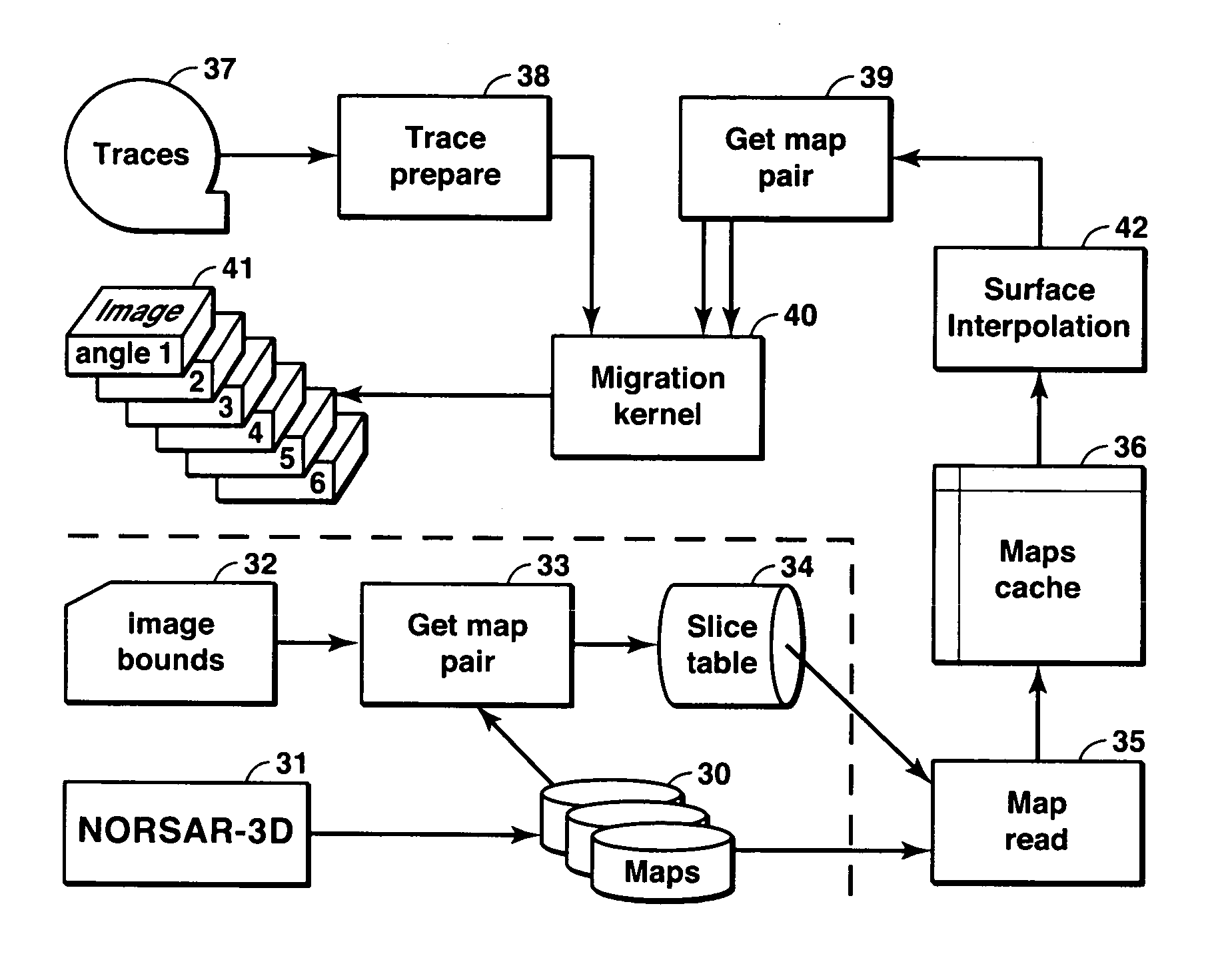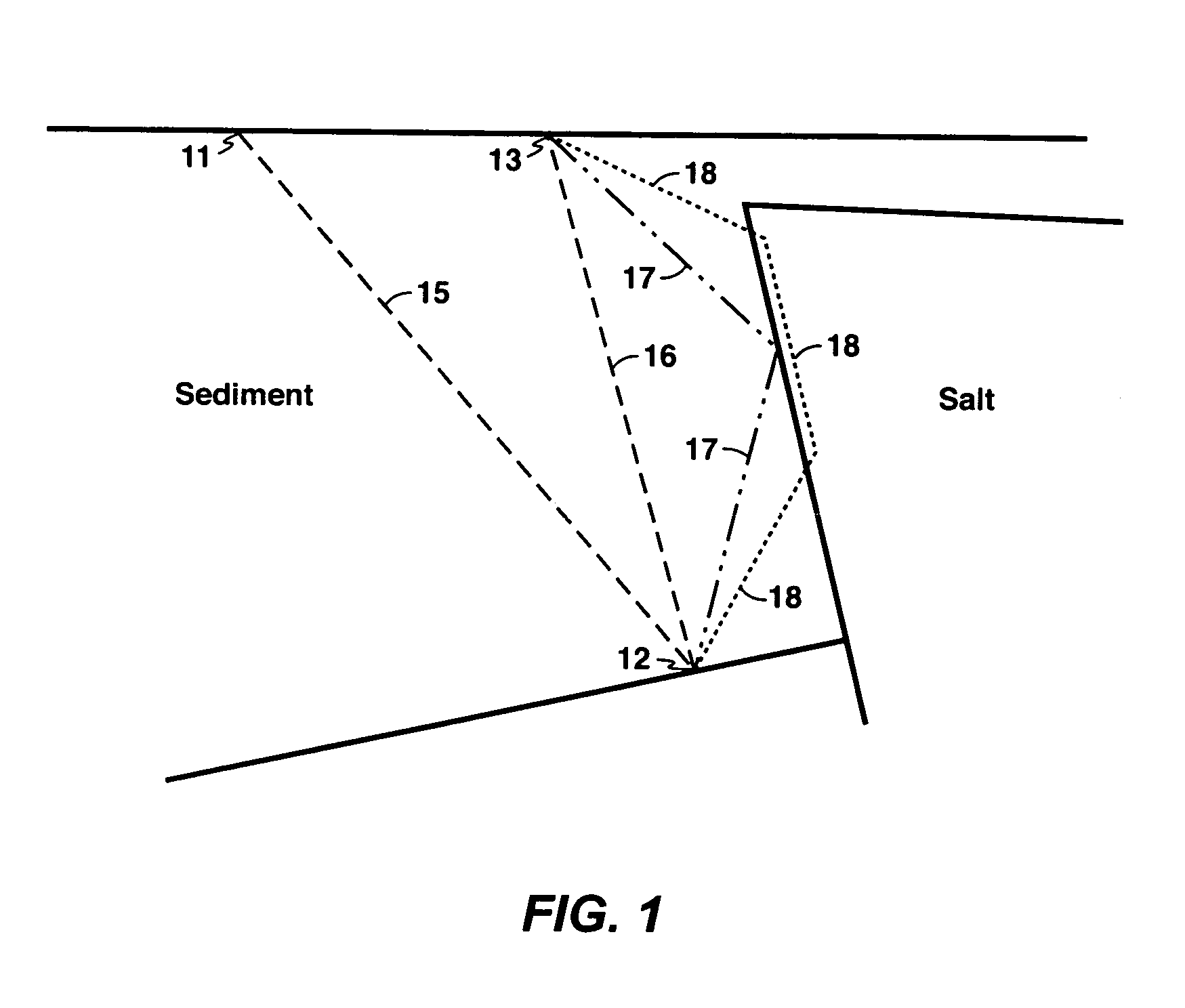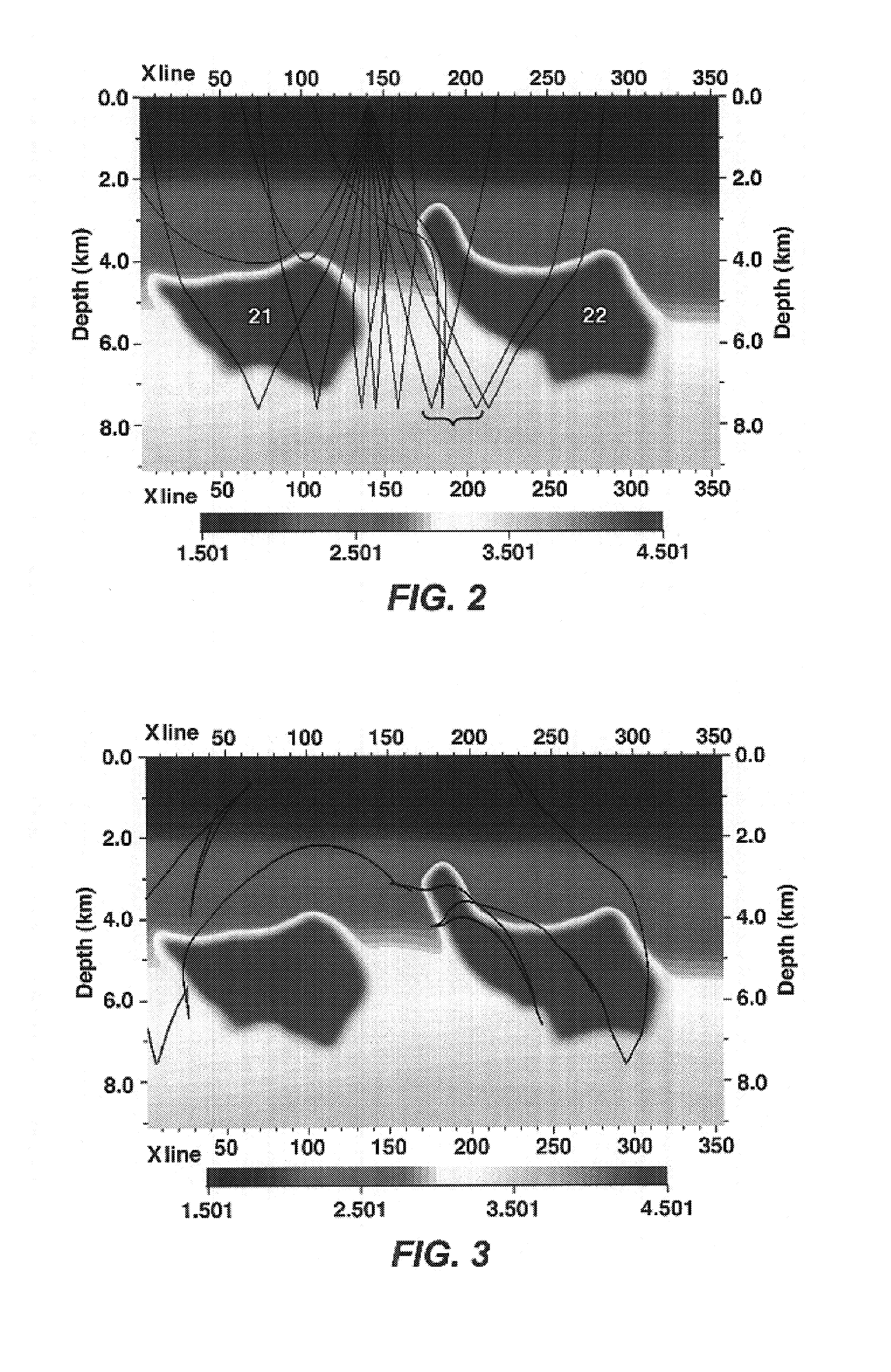Method for seismic imaging in geologically complex formations
a geologically complex and seismic imaging technology, applied in the field of geological prospecting, can solve the problems of inability to image subsalt reflectors satisfactorily, slow and expensive current methods proposed to deal with multipath imaging, and inability to use widely available computer technology to achieve 3-d imaging. efficient and parallelization
- Summary
- Abstract
- Description
- Claims
- Application Information
AI Technical Summary
Benefits of technology
Problems solved by technology
Method used
Image
Examples
example
[0065]The method is illustrated in FIGS. 7A and 7B using 2-D synthetic data. The model covers a depth range 6000–22450 ft. and both images are full stacked sections. Both images were produced using the exact velocity model that was used to generate the input seismic data. In FIG. 7A, produced by stacking Kirchhoff common offset images as described previously, it can be seen that conventional techniques that do not properly account for multipathing produce reflector images that are poor under the salt mass 71 at the right, i.e., below 17,000 feet and for trace number above 450. On the other hand, in FIG. 7B, generated by the present inventive method using a CRAM algorithm, the reflectors can be followed under the salt mass. Also in FIG. 7B the salt boundary is better imaged and there is a better signal to noise ratio. These are all effects that one would expect from a successful multipath imaging method which should be able to focus more of the energy in the seismic data than could a...
PUM
 Login to View More
Login to View More Abstract
Description
Claims
Application Information
 Login to View More
Login to View More - R&D
- Intellectual Property
- Life Sciences
- Materials
- Tech Scout
- Unparalleled Data Quality
- Higher Quality Content
- 60% Fewer Hallucinations
Browse by: Latest US Patents, China's latest patents, Technical Efficacy Thesaurus, Application Domain, Technology Topic, Popular Technical Reports.
© 2025 PatSnap. All rights reserved.Legal|Privacy policy|Modern Slavery Act Transparency Statement|Sitemap|About US| Contact US: help@patsnap.com



